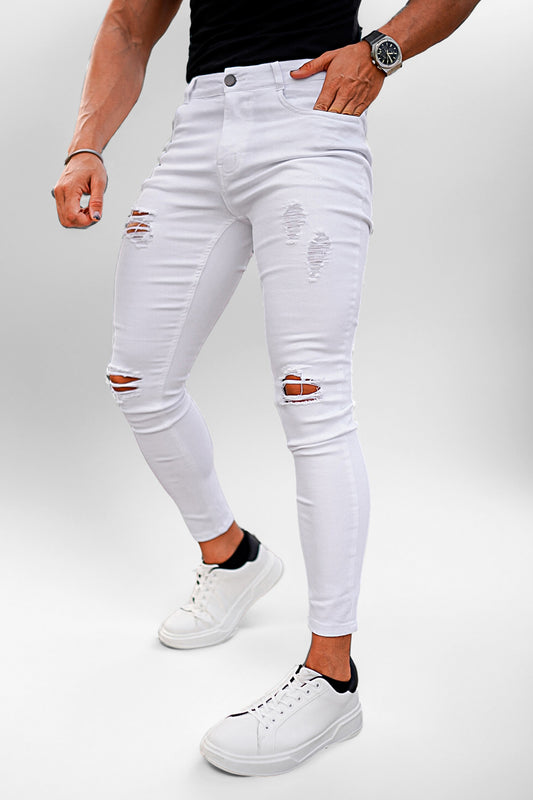Are Hoodies and Sweaters the Same?
When the weather turns chilly, people often reach for comfortable clothing to keep warm.
Hoodies and sweaters are two popular choices that often come to mind.
Though they might seem similar at first glance, but are they the same?

Definition and Origin
Hoodies: An Overview
A hoodie is a type of sweatshirt with an attached hood. The term "hoodie" is derived from the hood itself, which provides additional warmth and protection for the head.
Hoodies often come with a front pocket or "kangaroo pocket," which is a large pocket that can be used to store items or keep your hands warm.
The design of hoodies is generally casual, and they are commonly associated with sportswear and streetwear.
The origin of the hoodie can be traced back to the early 20th century. The garment became popular in the 1970s when it was adopted by the hip-hop and skateboarding subcultures.
Its functional and casual design quickly gained widespread acceptance, making it a staple in many wardrobes.
Sweaters: An Overview
A sweater, on the other hand, is a knitted garment typically worn on the upper body.
It is designed to provide warmth by trapping air close to the skin. Sweaters come in various styles, including pullovers and cardigans.
Cardigans have an open front and are usually fastened with buttons or zippers, while pullovers are a continuous piece of knitted fabric without any fastenings.
The history of the sweater dates back to the 15th century when knitted garments were first worn for warmth.
Modern sweaters as we know them became popular in the 19th century, with advancements in knitting technology and the widespread availability of yarns.
Material and Construction
Hoodies: Fabric Choices
Hoodies are typically made from cotton or a cotton-blend fabric, which offers softness and breathability.
Many hoodies also incorporate polyester or fleece materials to enhance warmth and durability.
The fabric of a hoodie is usually thicker than that of a standard T-shirt but not as heavy as a traditional sweater.
The construction of a hoodie includes features like ribbed cuffs and hems to ensure a snug fit. The hood is often lined with a soft material for added comfort, and some hoodies come with adjustable drawstrings to customize the fit of the hood.
Sweaters: Yarn and Knitting
Sweaters are made from a variety of yarns, including wool, cotton, acrylic, and blends of these materials.
Wool sweaters are known for their excellent insulation properties, while cotton sweaters are lighter and more breathable. Acrylic sweaters offer affordability and ease of care.
The knitting process for sweaters can vary, with different patterns and techniques such as stockinette stitch, ribbing, and cable knitting.
The type of yarn and knitting technique used can affect the sweater’s texture, warmth, and overall appearance.
Style and Design
Hoodies: Casual and Functional
Hoodies are designed for casual wear and are often associated with athletic or street fashion. They are versatile garments that can be layered over T-shirts or under jackets.
The attached hood adds a sporty or laid-back vibe, making hoodies ideal for relaxed settings or outdoor activities.
Hoodies come in a variety of styles, including zip-up and pullover designs. They may also feature graphic prints, logos, or embroidered designs, catering to personal style preferences and cultural trends.
Sweaters: Elegant and Varied
Sweaters can range from casual to formal, depending on the design and material. They are often considered more versatile in terms of dressiness.
For example, a classic wool sweater can be worn over a collared shirt for a smart-casual look, while a chunky knit sweater provides a more relaxed appearance.
Sweaters come in numerous styles, including turtlenecks, V-necks, and crewnecks. Cardigans offer an additional layer of styling options, with their open front allowing for various outfit combinations.
Usage and Occasions
Hoodies: Everyday and Active Wear
Hoodies are typically worn for casual outings, exercising, or lounging at home.
Their comfort and practicality make them suitable for a range of activities, from running errands to relaxing on a weekend.
They are also popular among young people and those involved in sports or outdoor activities.
Sweaters: Versatile and Seasonal
Sweaters are more versatile in terms of occasions and can be dressed up or down. They are suitable for cooler weather and can be worn in both casual and semi-formal settings.
Sweaters are a go-to choice for layering during fall and winter months and can be paired with everything from jeans to dress pants.
Care and Maintenance
Hoodies: Easy Care
Hoodies are generally easy to care for and can be machine washed. However, it is advisable to follow the care instructions on the label to maintain the fabric’s quality and prevent shrinking. Many hoodies are also dryer-safe, but air drying can help preserve their shape and color.
Sweaters: Delicate Handling
Sweaters, especially those made from wool or other delicate fibers, often require more careful handling.
Hand washing or using a gentle cycle in cold water is recommended to prevent damage. Drying flat is usually advised to maintain the sweater’s shape and avoid stretching.
Conclusion
While hoodies and sweaters share some similarities in providing warmth and comfort, they cater to different needs and style preferences.
Hoodies are defined by their attached hoods and casual design, making them perfect for informal occasions.
On the other hand, sweaters offer a broader range of designs and materials, suitable for both casual and formal wear.










